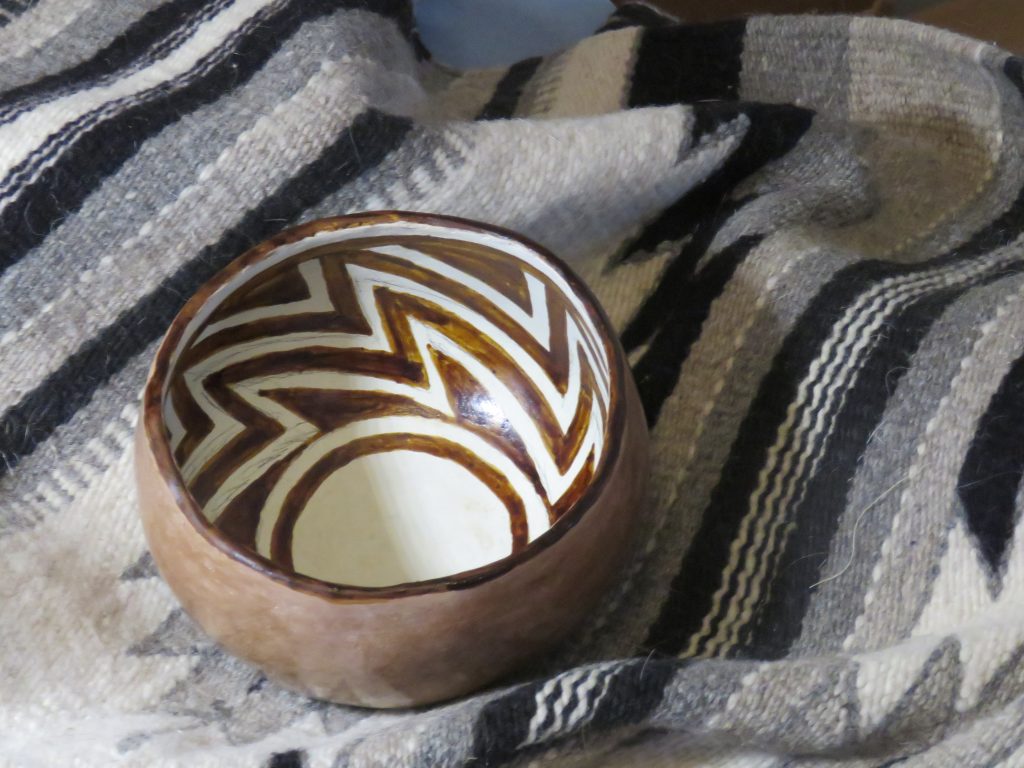Work-In-Progress Wednesday:
Salado Polychrome Bowl
In which I take up my friend Andy on his challenge!
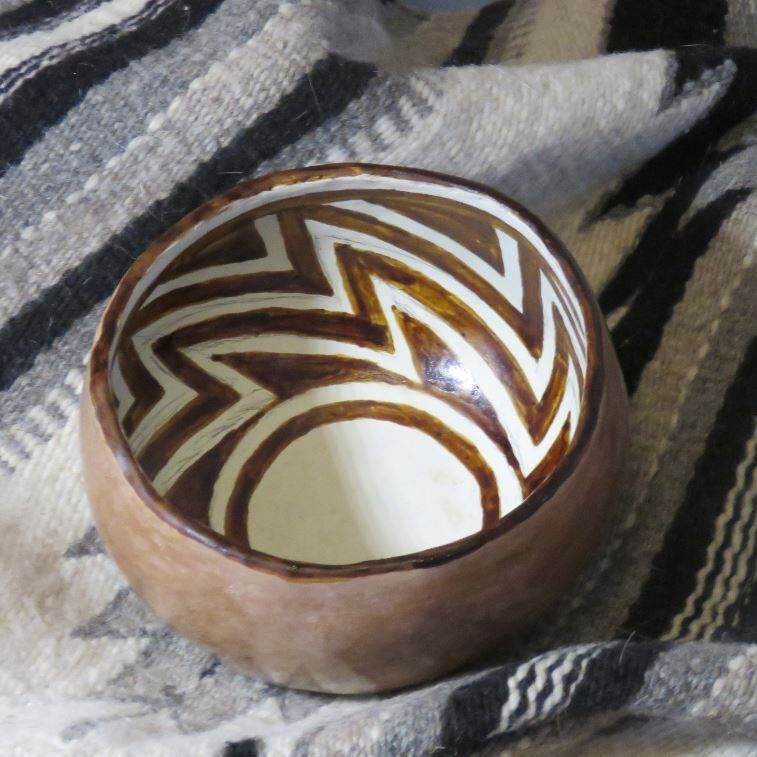
Salado Polychrome Replica Bowl–Painted and Ready for Firing!
Countering the “Coronavirus Crazies” with a little creativity!
My artistic journey has gotten rather side-tracked of late, starting with a virus shortly before Christmas (long before anyone had ever heard of Covid!), followed by diagnoses of bronchitis (January), pneumonia (February) and bronchitis again/still (March). I’m slowly on the mend, and hunkered in my bunker at home in hopes that the Easter Bunny doesn’t bring me coronavirus for April!
One project that I have managed to tackle has been in response to my friend Andy Ward’s #onecoilchallenge to make a pot, bowl or mug using a single coil of clay. (If you want to take him up on the challenge, too, you can find it here and here.)
I decided to make another Salado-style polychrome pot (see my last try here), and though I had initially intended it to be a seed pot, it “decided” to become a bowl, by virtue of my trimming off the top of the pot when it got rather wonky-looking. But I had forgotten that a bowl is a lot more work, since with a bowl you have to finish both the inside and the outside, so maybe next time I’ll keep trying to resurrect a wonky pot!
This shape is actually more akin to what the ancient inhabitants of Arizona made than my last one, although in truth there’s a lot of variation, and the most common form falls somewhere in between. Whatever shape it wound up, it was built using my usual “Mancos Grey” natural clay—a misnomer, since it is actually dug up smack in the middle of Greater Metropolitan Downtown Cortez, Colorado, (pop. 8,482). Once the bowl was slightly more than leather hard I polished it lightly with a smooth rock, which gives the gloss you see below.
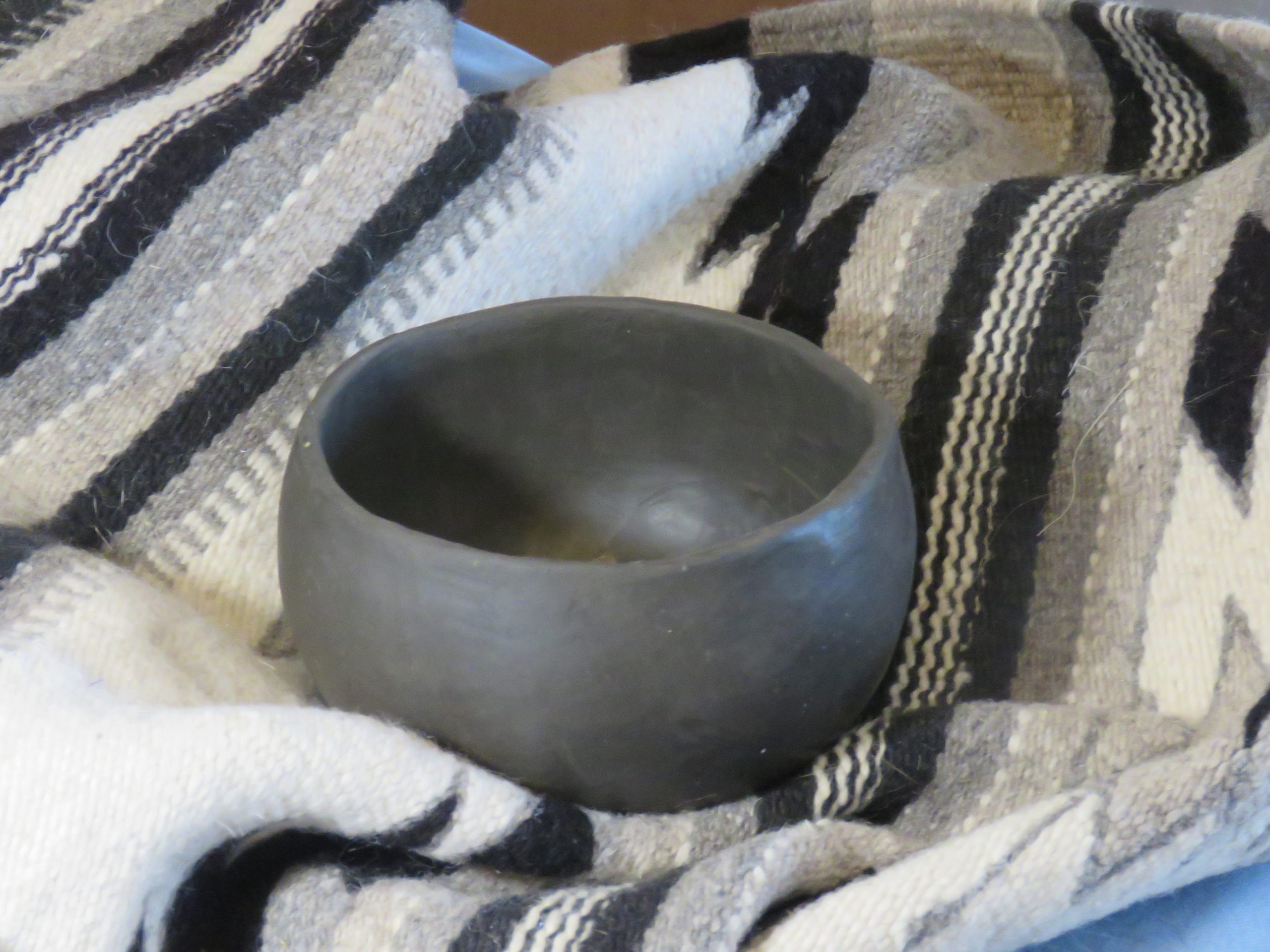
First Step Done, and Ready for Slipping!
I slipped it using “Cannonball White,” a white native clay excavated from the side of a cliff on Cannonball Mesa, a few miles west of that same aforementioned booming metropolis. This is the same type of clay that was used prehistorically by the Anasazi/Ancestral Puebloans to slip their gorgeous black-on-white pottery (they also frequently used Mancos Grey for the bodies of the pots). A slip is just a slurry of a very fine clay, usually about the consistency of cream or yogurt.
For this slip job, I got to use “beaver butt” for the first time, as Matts Myhrman jocularly refers to it—a piece of beaver fur about 1” x 3” that Matts kindly gave me at the last Southwest Kiln Conference. Heretofore I had always just used my finger dipped in the slip to spread it over the surface of a pot, but found that Matts’ piece of “beaver butt,” dipped in water and then in the slip gave a wonderfully smooth surface with a lot less work. Thanks, Matts!
The outside of the pot was slipped with what I’ve nicknamed “Recapture Red,” a bright orangey-red clay dug from a bank beside the Recapture Reservoir outside Blanding, Utah, during the 2018 Kiln Conference. (Other people hoard toilet paper…ceramicists hoard clay.)
Once both surfaces were slipped, I used a smooth rock to burnish them to a high shine. This works because clay particles are flat and plate-like, rather than being rounded or angular like sand or silt. When the clay is at just the right stage of dampness, a smooth surface will push them down so that they lie flat and reflect the light back at the viewer. If you have seen the beautiful black-on-black pottery made by such masters as Maria Martinez of San Ildefonso pueblo, that is how the shine on those pots is accomplished—it’s not the result of a glaze, just a huge amount of elbow grease.
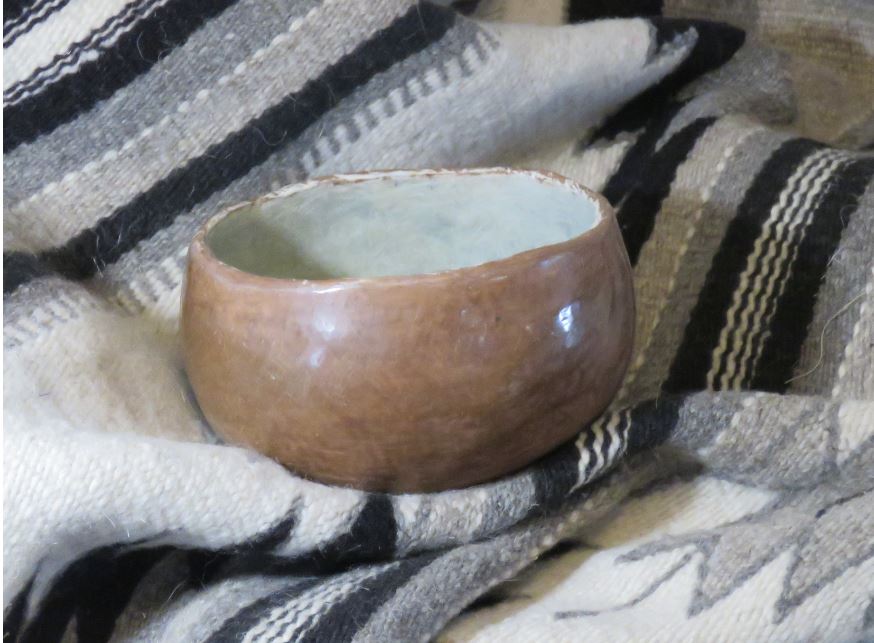
Slipped, burnished, and ready for painting!
I can’t claim to be in Maria’s class, but burnishing pots is one of my favorite parts of the process. Burnishing seems to be a love-it-or-loathe-it proposition amongst potters, but I find it very zen, and tremendously satisfying to see that gloss emerge from what was, after all, just a glorified lump of mud.
Once my glorified lump of mud had dried thoroughly, it was ready for painting! I chose to do a variation on a pattern on some pots in the collection at Besh-Ba-Gowah Archaeological Park in Globe, Arizona. The original pattern included stepped edges along one side of the triangles, but I decided that my brain wasn’t up to handling that much complexity that day, so I simplified it. (Some day I’ll get brave and tackle the full pattern!)
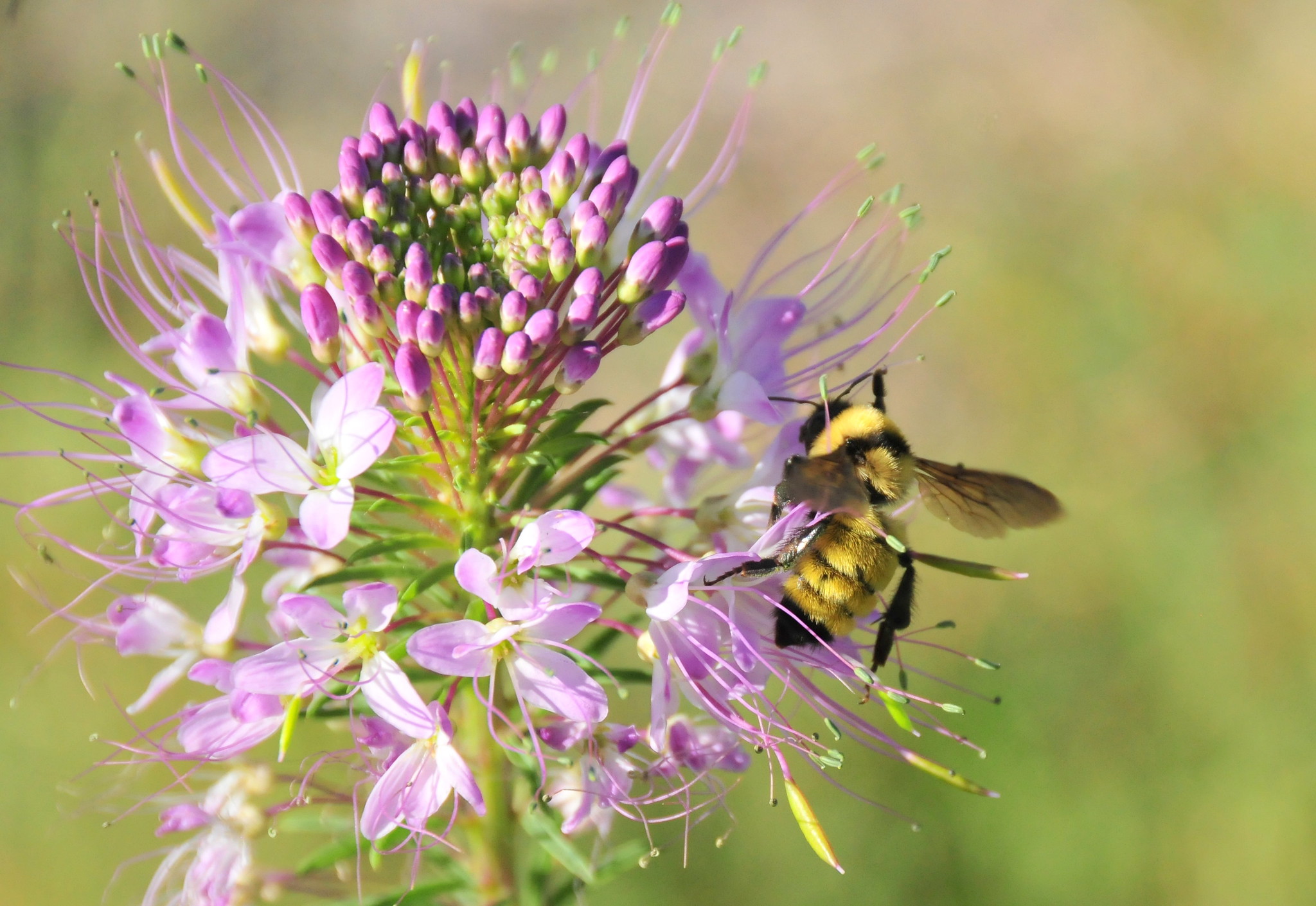
Rocky Mountain Beeplant
The “paint” is made by simmering Rocky Mountain Beeplant (Cleome serrulata) in water for several hours (it smells awful—I finally got smart and do it in an old crock-pot on the back porch. I guess that’s one advantage the original Salado potters had doing it over an open fire…they didn’t have to worry about stinking everybody out of the house!)
After it is rank and roughly the colour of your co-worker’s make-your-hair-stand-on-end-Monday-morning-coffee, you fish out all of the plant parts, and continue to boil it down until it makes a thick syrup. It is then applied with a brush made from a yucca leaf (you can see me doing that on another pot here).
It may seem that using a piece of a leaf to apply the paint would entail sacrificing sanity for the sake of authenticity, but it actually isn’t…compared to using a “normal” paintbrush, the fibres in the yucca leaf give you much more control and a smoother line.
So now my little Salado-style bowl is all painted and ready to fire, but it will be a while before my lungs are up to getting a faceful of smoke, so check back with me and see how it turns out! (But there’s another #onecoilchallenge seed pot coming soon!)
Everyone stay safe, stay well, stay sane, and let me know what you think in the comments below!
Search
Search for:
Recent Posts
- Work-in-Progress Wednesday: Toad Abode May 18, 2024
- Work-in-Progress Wednesday: UFO? May 18, 2024
Recent Comments
Categories
Categories Select Category Uncategorized (2)
Archives
Archives Select Month May 2024 (2) Search for:
Product Categories
SearchSearch
Recent Posts
Recent Comments
No comments to show.
Archives
Categories
Post navigation
Leave a Comment
Logged in as llsinkey. Edit your profile. Log out? Required fields are marked *Type here..

